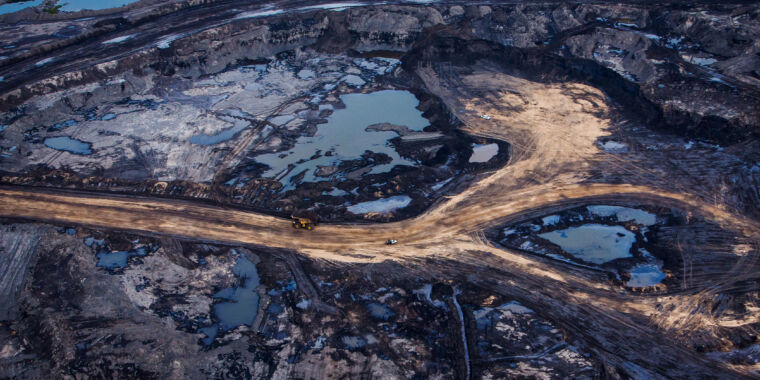Air pollution from Canada’s tar sands is much worse than we thought


Canada’s tar sands have gained infamy for being one of the world’s most polluting sources of oil, thanks to the large amounts of energy and water use required for their extraction. A new study says the operations are also emitting far higher levels of a range of air pollutants than previously known, with implications for communities living nearby and far downwind.
The research, published Thursday in Science, took direct measurements of organic carbon emissions from aircraft flying above the tar sands, also called oil sands, and found levels that were 20 to 64 times higher than what companies were reporting. Total organic carbon includes a wide range of compounds, some of which can contribute directly to hazardous air pollution locally and others that can react in the atmosphere to form small particulate matter, or PM 2.5, a dangerous pollutant that can travel long distances and lodge deep in the lungs.
The study found that tar sands operations were releasing as much of these pollutants as all other human-made sources in Canada combined. For certain classes of heavy organic compounds, which are more likely to form particulates downwind, the concentrations were higher than what’s generally found in large metropolises like Los Angeles.
“The absolute magnitude of those emissions were a lot higher than what we expected,” said John Liggio, a research scientist at Environment and Climate Change Canada, the nation’s environmental regulatory agency, and a co-author on the study. Researchers at Yale University also contributed.
Seth Shonkoff, executive director of PSE Healthy Energy, an independent scientific research institute in California, who was not involved in the study, said the findings suggest air pollution from tar sands operations is more damaging to people’s health than previously known.
“I actually could hardly believe what I was reading,” Shonkoff said of the new study.
Over the last decade, a growing body of research has examined emissions of different air pollutants from oil and gas operations across the United States and Canada, and much of that has shown that industry estimates tend to undercount what’s being released, he said. “But the scale of this discrepancy is very surprising.”
Mark Cameron, vice president of external relations at the Pathways Alliance, an oil sands industry group, said in an email that the findings warrant further review and that “the oil sands industry measures emissions using standards set by Environment and Climate Change Canada and we look forward to working together to explore opportunities to further enhance our measurement practices.”
Source link




